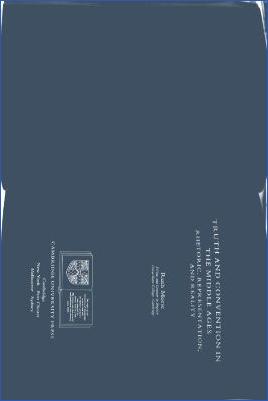
| Truth and Convention in Middle Ages. Rhetoric, Representation and Reality | |
| History | |
| PDF Book | |
| 153 | |
| 105.55 Mb(s) | |
|
|
| October 8, 2023 | |
| English | |
| Read PDF Book Online | |
| Click to Download the PDF |
Truth and Convention in Middle Ages. Rhetoric, Representation and Reality
Ruth Morse’s book, ‘Truth and Convention in Middle Ages. Rhetoric, Representation and Reality’, is a comprehensive exploration of the ways in which medieval thinkers and writers approached the concept of truth. Morse argues that during the Middle Ages, truth was not a fixed and objective concept, but rather something that was constructed and negotiated through language and representation.
The book is divided into three main sections, each of which examines a different aspect of medieval truth culture. The first section focuses on the role of rhetoric in shaping truth. Morse argues that medieval thinkers were highly attuned to the power of language to shape reality, and that they used rhetoric as a tool to persuade and convince others of their own version of the truth. She explores the ways in which medieval writers used rhetorical devices such as metaphor, allegory, and irony to convey their ideas and to create a sense of truth.
The second section of the book looks at the role of representation in constructing truth. Morse argues that medieval writers were deeply concerned with the ways in which reality was represented in art, literature, and other forms of cultural expression. She explores the ways in which medieval representations of reality were often highly symbolic and allegorical, and how these representations were used to convey complex ideas about truth and morality.
The final section of the book focuses on the relationship between truth and reality. Morse argues that medieval thinkers were acutely aware of the gap between truth and reality, and that they often used this gap as a way to explore the nature of truth itself. She explores the ways in which medieval writers used paradox and contradiction to explore the limits of human understanding and to question the very nature of truth.
Overall, ‘Truth and Convention in Middle Ages. Rhetoric, Representation and Reality’ is a fascinating exploration of a complex and multifaceted topic. Morse’s writing is clear and engaging, and she draws on a wide range of sources to support her arguments. This book is a must-read for anyone interested in medieval culture, philosophy, or literature, and it will undoubtedly become a classic in the field..
Digital screenshot from the PDF Book
To learn more about the book titled: Truth and Convention in Middle Ages. Rhetoric, Representation and Reality, Click the download button below to get it for free
